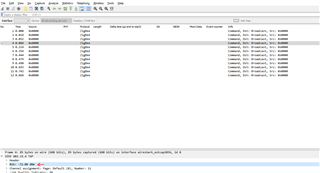Hi, I tested "Simple_coap_client" and "simple_coap_server" on NRF52840 using Threading SDK.
I want to change the transmit power, so I used "otPlatRadioSetTransmitPower ()".
Although the transmit power range is -20 to 8dBm, I can set an abnormal value such as 100 with otPlatRadioSetTransmitPower ().
When setting 100 with otPlatRadioSetTransmitPower (), it was confirmed that the value was 100 with otPlatRadioGetTransmitPower ().
Is the transmit power range -20 to 8 dBm? Or is there a mistake in the transmit power setting method?
I'm sorry in poor English.



